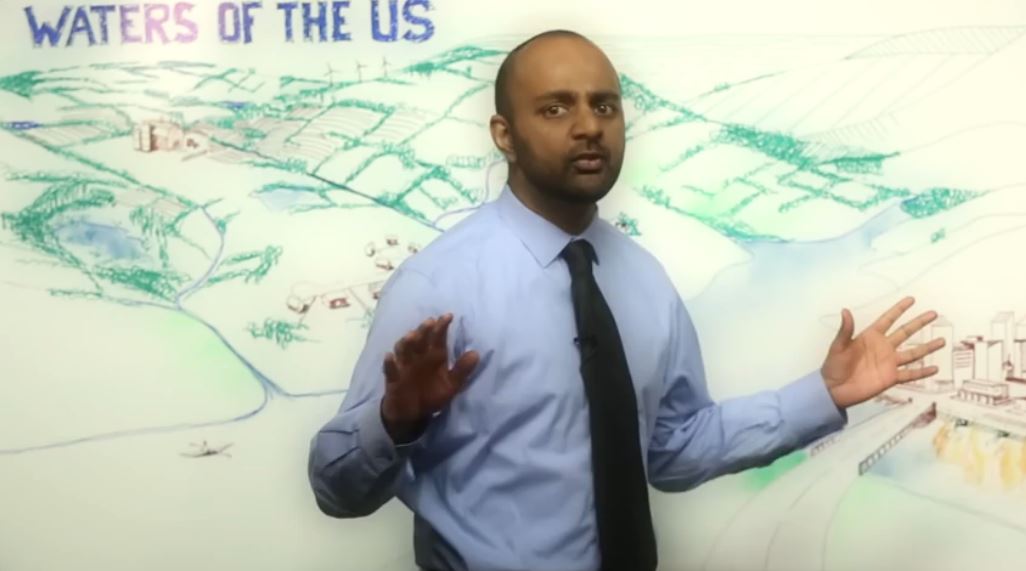The biggest power grab in the 50-year history of the Environmental Protection Agency (EPA) was significantly blunted in April 2020, when the Trump administration – to the relief of rural communities across the country — rolled back the Obama-era “Waters of the United States” (WOTUS) rule and replaced it with the “Navigable Waters Protection Rule” (NWPR).
That respite, however, was short-lived. On June 9, EPA Administrator Michael Regan announced, to the surprise of no one, that the Biden administration was preparing to turn up the heat on farmers, ranchers, fruit growers, and anyone else owning land Washington bureaucrats determine poses a threat to the nation’s waterways.
“After reviewing the Navigable Waters Protection Rule, as directed by President Biden, the EPA and the Department of the Army have determined that this rule is leading to significant environmental degradation,” Regan said.
This means that EPA and the U.S. Army Corps of Engineers, which share jurisdiction over bodies of water under the Clean Water Act (CWA), will scrap the Trump rule and put in its place a version of the 2015 Obama rule that imposed federal zoning on millions of acres of rural land. A complete return to the Obama WOTUS rule is impossible, because two federal courts – one in Texas and one in Georgia – struck down two of its sections as unconstitutional.
Regulating the word “Navigable” out of the Clean Water Act
But whatever the Biden administration comes up with is already sending chills down the spines of people who make a living in agriculture. “Administrator Regan recently recognized the flaws in the 2015 Waters of the U.S. rule and pledged not to return to those overreaching regulations,” American Farm Bureau President Zippy Duvall said. “We are deeply concerned that the EPA plans to reverse the Navigable Waters Protection Rule, which puts the future of responsible protections at risk. We expected extensive outreach, but today’s announcement fails to recognize the concerns of farmers and ranchers.
“We call on EPA to respect the statute, recognize the burden that overreaching regulation puts on farmers and ranchers and not write the term ‘navigable’ out of the Clean Water Act. On this issue and prior converted croplands and ephemerals (meaning ephemeral bodies of water), we also urge [Agriculture] Secretary Vilsack that we don’t return to the regulatory land grab that was the 2015 WOTUS Rule.”
Duvall’s reference to “writing the word ‘navigable’ out of the Clean Water Act” goes to the heart of what is at stake, because that’s exactly what the Obama WOTUS rule did. The CWA grants EPA and the Corps jurisdiction over “navigable waters of the United States,” but other loosey goosey language in the statute left open the scope of the feds’ writ. The Obama WOTUS rule was justified as an effort to “clarify” that jurisdiction. And “clarify” it they did by expanding the jurisdiction to include streams, ditches, ponds, and creeks, none of which are navigable. WOTUS allowed federal bureaucrats to say that a pond, creek, or ditch on someone’s land had a “hydraulic connection” to a navigable water and thus could be regulated. Landowners whose property was nowhere near a navigable water would have to get permits from EPA and/or the Corps to carry out normal commercial operations on their land.
The Trump revision to WOTUS provided landowners with clarity and certainty, which is precisely why it has to go. Once the Biden administration has done its dirty work, farmers and ranchers will have to lawyer up and hire consultants if they want to stay in business. The best hope for property owners is that Biden officials will write a rule that is so over the top that it, or parts of it, will be struck down in court.
